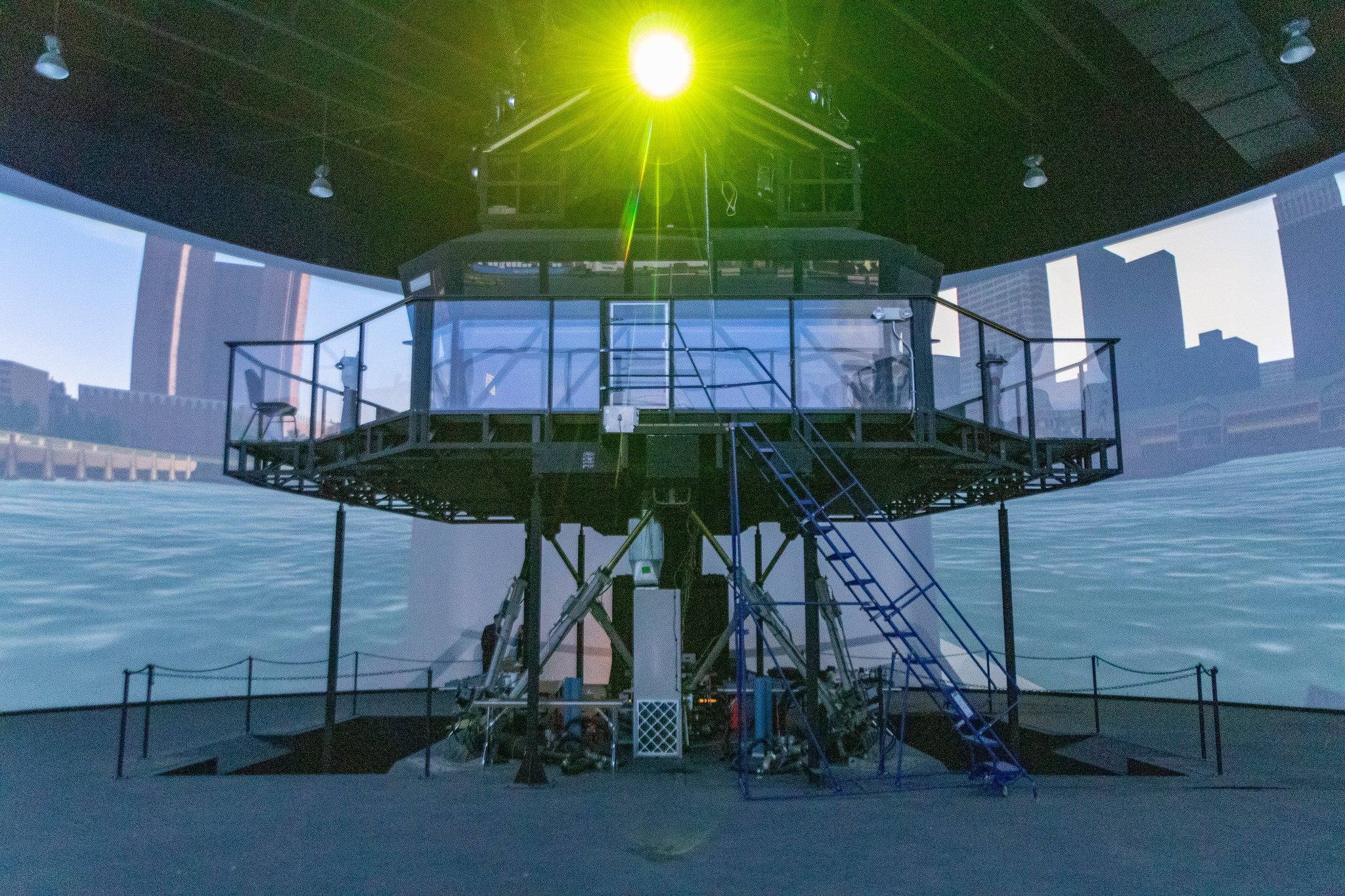MITAGS December 16, 2019
Just to the South of Baltimore, Maryland there is a hidden gem known as MITAGS (Facebook, Twitter, YouTube), or Maritime Institute of Technology and Graduate Studies. In conjunction with their Seattle location (formerly PMI, Pacific Maritime Institute) as well as the conference center (MCC, Maritime Conference Center) located here it is collectively known as MITAGS and the Maritime Conference Center. It is a non-profit vocational training center for individuals seeking to enter the maritime profession and for professional mariners seeking to advance their careers.
The organization was founded in 1967 and opened its doors in 1972. They expanded to the West Coast in the 1980s through the acquisition of the U.S. Maritime Administration’s Radar School in Seattle, Washington.
Quoting the MITAGS History page: “MITAGS is certified as a Maritime Training Provider by Det Norske Veritas (DNV-GL). MITAGS is also compliant with criteria set forth by the United States Coast Guard, the STCW Code, the Military Sealift Command (MSC), the International Lighthouse Authority (IALA), the American Pilots’ Association, the Maryland Higher Education Commission (MHEC), and the Washington State Workforce Training, Education, and Coordinating Board.”
They now have a 40 acre campus here which includes a 232 room hotel with a 500 seat dining area, pool, an exercise room and a movie theater nearby, Hoyt’s West Nursery Cinema 14. Their educational facilities include multiple full mission ship and tug simulators, as well as simulators of a variety of shipboard equipment including diesel and steam control simulators, a medical lab, a firefighting training facility in Seattle and so on. A pair of shuttles can transport their guests to and from BWI airport 5 minutes away, as well as the Light Rail and Amtrak stations which are also nearby.
I had the opportunity to tour some of their training facilities and was met in the reception area by Lindsay, their marketing manager. She first showed me the large dining area which has a nice selection of items for the students of their facility.
While walking through the passage that provides relative comfort in all weather between the hotel/conference center buildings and the academic building she explained that students sometimes bring their families here as they have limited amount of shore time since they are on ship for months at a time. They even have a limited number of pet friendly rooms!
In addition to more traditional classrooms and an auditorium,
they have 12 All Weather Navigation simulators.
A 120 degree tug simulator
I was then introduced to Christa and Jeremiah in the control room for what are called the Full-Mission Shiphandling Simulators. There are two sets of controls which includes a partial view of what is being displayed in the simulators. They have the ability to change weather and other environmental conditions in the simulator for the purpose of training or testing students. Many locations around the world can also be simulated here and they have the staff and facilities to create more simulated locations.
The simulator I was taken to was configured to simulate a Coast Guard cutter, the other one appeared from the screens to be configured to simulate a container ship.
I was led to the areas where the actual full mission shiphandling simulators are. The outside are metal and circular. I am told a company that also builds planetariums also built these. The above image shows a model of the simulator. Projectors display the simulation area on all but a few degrees of the circular room directly behind the simulator.
The simulator sits atop large hydraulic pistons which once would have caused the simulator itself to move with the waves. The structure is now bolted into place with posts and no longer moves at all. It was found that they were not necessary since the motion simulated by the images on the screen induces the feeling of actual motion in the simulator, which I can certainly attest to. Had I not seen the simulator had been immobilized I would have believed it was definitely moving!
Entering the bridge area itself I was shown the controls that were designed to replicate the functions of a variety of different kinds of ships which includes cruise ships and their azipods and powerful bow thrusters.
While Jeremiah was demonstrating that the weather, time of day, and shipping activity could be adjusted from moment to moment the sensation of motion seemed genuine and I am told that it sometimes induces seasickness in students. I could definitely feel that!
Visiting this simulator was truly an incredible experience!
Next I was shown one of the three 300 degree tug simulators on site which displayed areas from left to right in front of the operator plus a segment to the rear.
Having spent some time aboard the tugboat Lynne Moran several months ago I found the controls very similar. Like the ship simulators a variety of conditions and locations and environmental variables can be set.
These simulators are clearly an invaluable tool in educating and skill verification. They are remarkably well thought out and put together.
Also in the academic building is a centralized break area with a variety of beverages
and a choice of fruits, muffins, and bagels used for both students and conference guests.
A memorabilia room contains a variety of fascinating artifacts
and also includes some models of ships. This is an amazing place run by amazing people. Check out their course catalog!
Be sure to check out their video which discusses their activities. See more photos I took at this place by clicking here. The video below was taken by me during my visit to this amazing facility.






















